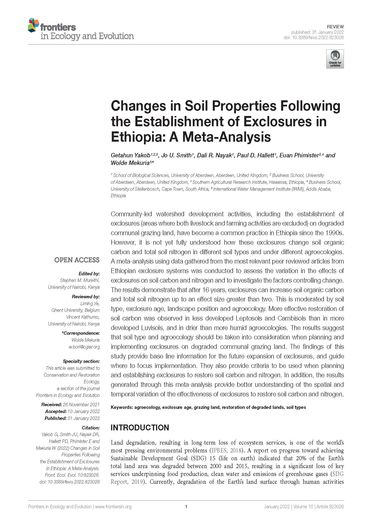Changes in soil properties following the establishment of exclosures in Ethiopia: a meta-analysis
Abstract
Community-led watershed development activities, including the establishment of exclosures (areas where both livestock and farming activities are excluded) on degraded communal grazing land, have become a common practice in Ethiopia since the 1990s. However, it is not yet fully understood how these exclosures change soil organic carbon and total soil nitrogen in different soil types and under different agroecologies. A meta-analysis using data gathered from the most relevant peer reviewed articles from Ethiopian exclosure systems was conducted to assess the variation in the effects of exclosures on soil carbon and nitrogen and to investigate the factors controlling change. The results demonstrate that after 16 years, exclosures can increase soil organic carbon and total soil nitrogen up to an effect size greater than two. This is moderated by soil type, exclosure age, landscape position and agroecology. More effective restoration of soil carbon was observed in less developed Leptosols and Cambisols than in more developed Luvisols, and in drier than more humid agroecologies. The results suggest that soil type and agroecology should be taken into consideration when planning and implementing exclosures on degraded communal grazing land. The findings of this study provide base line information for the future expansion of exclosures, and guide where to focus implementation. They also provide criteria to be used when planning and establishing exclosures to restore soil carbon and nitrogen. In addition, the results generated through this meta-analysis provide better understanding of the spatial and temporal variation of the effectiveness of exclosures to restore soil carbon and nitrogen.

